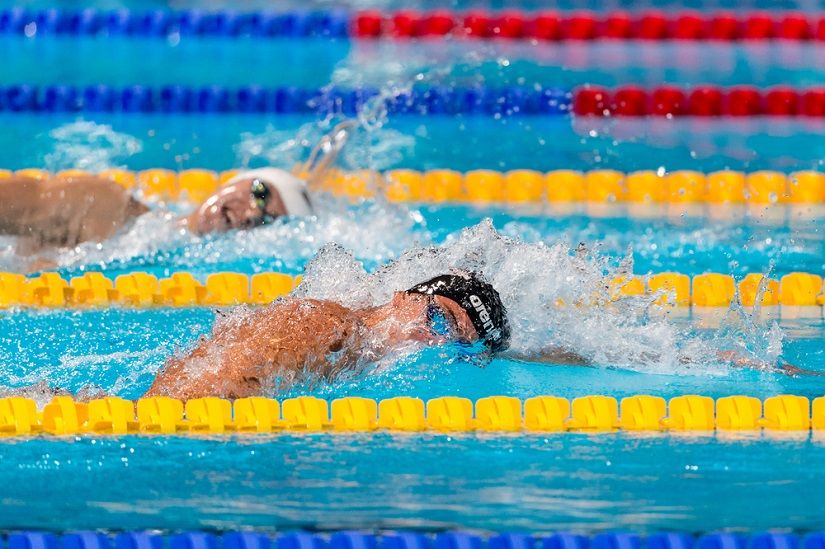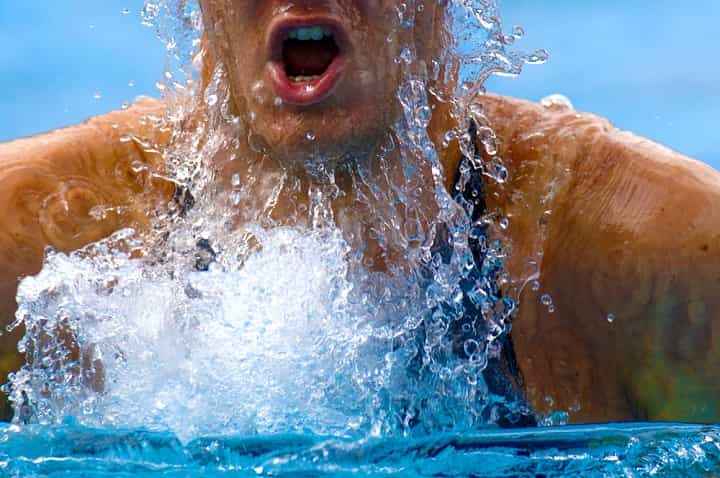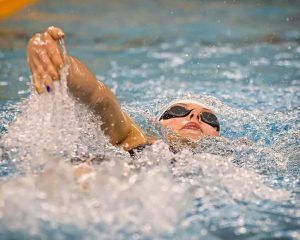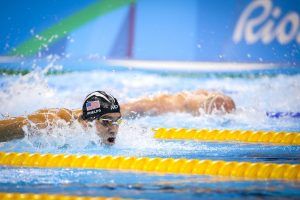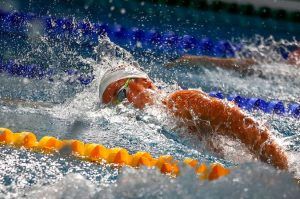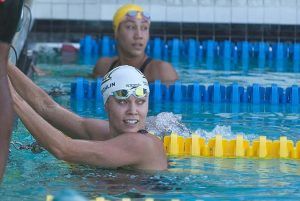Your swim coach has probably tried to drill it into you a dozen times over the years. The critical, over-riding importance of good nutrition.
Even without your coach trying to encourage you to make better life decisions when you have fork and knife in hand you know what you eat matters. After all, you need it for energy, for recovery, for hydration and to maintain body weight.
The effects of poor nutriton are no joke. It leaves you more sucseptible to illness. Means you aren’t recovering between races and practices. And of course, it means that you aer leaving a lot of potential on the table.
Here are three proven and powerful strategies that you can deploy to clean up your nutrition habits this season.
Let’s do this:
1. Prep & Plan your meals.
A powerful way to get a handle on your diet and nutrition is to pack and plan your meals ahead of time. Granted, the idea of barricading yourself in the kitchen for a couple hours and cooking up a ton of meals isn’t immediately appealing, but the benefits of meal prepping are undeniable.
Here are just a few of them:
Meal planning is cheaper. If you like eating better and saving money then meal planning is right up your chlorinated alley. Taking a slightly longer view on your meals means that you are usually buying in bulk, and eating prepped meals is a whole lot cheaper than eating out or dropping ten bucks on a “fresh” sub.
It gives you control of your diet. This is the biggest and best benefit of planning your meals. You are actively deciding what you are going to eat ahead of time and having the power to make the food choices in service of your goals, instead or reacting to your hunger and urges, which aren’t always trustworthy or thoughtful of what you want to achieve in the water.
Saves you time. Prepping a week’s worth of meals takes a couple hours, generally one and change once you get better at it. Which means that for lunch and dinner for the rest of the week you can pop open a healthy meal, nuke it for a minute, and you are off to the races. Bulk cooking comes in particularly handy later in the week as you are growing more and more fatigued from the accumulation of training and schoolwork.
Reduces stress. Knowing what you are going to eat ahead of time takes a lot of the panicked, last-minute indulging that a lot of athletes suffer from. (And people, really.) When you know what you need to eat you save yourself the stress and willpower-flexing that comes with trying to figure out what to make for dinner after a massive practice.
So what’s the next step with your meal prepping?
Put together a plan for your, err, plan.
Sit down with a sports dietitian and have them put together some sample meals for you. (This was the best couple hundred of dollars I have ever spent in my life and cannot recommend it enough.) With that, put together a shopping list so that you don’t walk into the grocery store and “accidentally” wander into a bulk candy bin.
Yes, having a plan for your meals takes work, but if you are serious about wanting to kick your nutrition into high gear starting with a plan will dramatically boost your odds of sticking with it and seeing the results you want.
See Also: 15 Diet Tips for High Performance Athletes
2. Clean up the environment.
Willpower, being that fickle little thing that it is, isn’t always around when we need it most. You know this. I know this.
And yet, we still like to tempt fate by placing ourselves into situations and places where we need to summon every last ounce of it to keep us from diving into a ball pit of cheeseburgers and M&M’s.
Like it or not, we are the products of our environment.
We, quite literally, eat what we see.
So what does this mean?
- Clean out the fridge and the cupboard. Go through your kitchen and pantry and give the old heave-ho to the things that are holding you back in the nutrition department. Cocoa Puffs? See ya later. Doritos? Toodles.
- Have emergency snack packs of healthy food. Like most, I imagine that you are a ruthless snacker. Snacking is just, well, awesome. Having healthy finger snacking foods around the house, in your swim bag, or in your backpack at school will give you an emergency food item that will help keep you from pumping that nearby vending machine full of quarters.
- Put the healthy, need-to-eat stuff in plain sight. We’ve all heard the phrase, we are what we eat. But actually, we eat what we see. Some fascinating research has shown that our food choices are significantly colored by ease of access. Wanna eat more bananas? Put them on the counter so you have to walk past them. More fish oil? Put it on the center shelf in the fridge. Stop hiding the healthy food. It only guarantees that it will never get eaten.
- Make the bad stuff really hard to eat. Okay, so you don’t have quite enough willpower to part ways with your Cheetos and Cocoa Puffs. The next best thing you can is make that convenient food really inconvenient. How, you ask? By placing those not-so-great snacks in the basement, or outside in your car, or buried in the backyard. You’ll be surprised how much of a difference that little extra effort can dissuade you from Oreo-stuffing your face.
3. Keep a food journal.
When it comes to changing behavior (in this case, our nutrition habits), the first step is the self-awareness to understand what we are doing, err, eating.
Self-monitoring has been shown to work across a kajillion different studies, with one study of 1,700 dieters losing twice as much weight as those who didn’t keep a food journal.
The reason that keeping a food journal is so powerful is pretty simple: it forces you to come to terms with what you are actually eating. No longer can you hide behind the powerful veil of denial and “oh, pretty sure it was just one slice” any longer.
Two things for making your food journal work:
- You don’t need to go crazy on the details. Writing out exact calorie counts and all the macros can be a lot of work, so if you are just starting out, stick to the basics, but be accurate and don’t sugar coat how much or how little you are actually eating.
- Accuracy is key. The temptation will always be there to gloss over your bad food choices while over-exaggerating the better ones. Use your food journal accurately and honestly otherwise it loses a huge amount of value.
Having a mildly detailed food diary (or journal, if “diary” isn’t manly enough for ya) is something you will need when you sit down with a dietitian, which I truly cannot recommend enough. It gives them the knowledge and ability to poke through the holes of your nutrition, and give you accurate, actionable advice based on what you like to eat.
How to Go Semi-Pro with a Food Journal
If you want to take your food journal to the next level, beside each meal it can super helpful to write down a quick couple words on why you just powered down that specific meal.
You’ll be surprised, chagrined, and curious to see that you don’t always eat when you are hungry (shocking, right?), and that some of the stuff you are cramming into your mouth-hole is out of boredom, ease of access (it’s sitting right there, so might as well eat it!), stress, or because you are actually hungry.
Having this little piece of intel into your eating habits is a powerful way of being able to undermine those urges when they happen again at a later date. It gives you leverage to talk yourself down when you have those moments of weakness:
Okay, I wanna eat that whole pizza, but I don’t need to because I know I am just stressed out with schoolwork, and I am actually not that hungry.”
The Takeaway
For a lot of us it can feel like a real battle when it comes to trying to conquer our eating habits. All too often it seems like we are subject to the whims of our urges, tastes, and last-minute episodes of “hangryness.”
But it doesn’t have to be this way.
With a little bit of planning, some humility in knowing just how powerful those urges are, and doing the legwork to break down our nutrition, we can not only master our cravings, but also reap of health and performance benefits along the way.
This article is part of our “nutrition for swimmers” series.
Here are other posts in this series:
- Creatine for Swimmers: What You Need to Know
- How to Avoid Muscle Cramps in Swimmers
- 5 Quick Nutrition Tips for Competitive Swimmers

